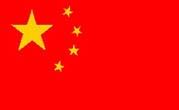Lisa Faden
Newton North High School, Newton, MA
Tibet in an Asian Studies Curriculum
Geography
 China-Tibet Relations
China-Tibet Relations 
The question of whether Tibet should be an independent country or a part of the nation of China is intensely controversial. The Dalai Lama, the leader of the Tibetan government in exile, is generally treated with reverence by the popular media. On the other hand, American and European governments will not openly challenge China's sovereignty over Tibet because such a move would endanger relations with China. It is difficult to find balanced treatments of the conflict over Tibetan independence.
The controversy over the Tibetan independence movement makes it a great topic for study. It provides an opportunity for students to wrestle with tough questions, such as,
Under what circumstances does a group of people have a right to self-determination?
How do you read and interpret conflicting accounts of the same historical events?
How do you determine the credibility of a source?
Can a government in exile represent the will of its people?
Resources
A helpful overview of the history of China-Tibet relations is Melvyn Goldstein's The Snow Lion and the Dragon (Berkley: University of California Press, 1987). At just over 100 pages, it is concise and is regarded as the most balanced account available. A timeline of Tibetan history is available on The Tibet Himalaya Digital Library and is a useful companion to the Goldstein book..
The 1997 Martin Scorcese film Kundun is too one-sided to be presented to students as an unbiased account. Scorcese worked closely with a number of Tibetans in exile to create this portrait of the life of the 14th Dalai Lama and has even cast members of his family in the film. Some of the scenes in the first half of the movie present vivid, intimate scenes from the Dalai Lama's life. I particularly recommend showing the scenes in which the two-year-old Llamo Dhondrub is identified as the successor to the 13th Dalai Lama. Not only do these scenes provide a window into an important religious and political process in Tibet, but they also can serve as the foundation for a discussion of the implications of choosing leaders by finding reincarnations of past leaders. (What are the dangers of this practice? What are the advantages? Why might this practice survive?) The film suggests that there is a margin for error, but it also implies that the wisdom and compassion of the Dalai Lama, as well as his rigorous training in the Tibetan Buddhist tradition, make him the true leader of the Tibetan people. More questionably, Kundun presents the Dalai Lama as universally loved in Tibet.
For a less rosy view of traditional Tibetan society, an interesting and readable source is The Struggle for Modern Tibet by Melvyn Goldstein, William Siebenschuh, and Tashi Tsering (Armonk, NY: M.E. Sharpe, 1997). The book is a memoir of Tashi Tsering, a Tibetan educator who recognized the inequalities and injustices of Tibet's theocratic society pre-1950. Tsering managed to study in the U.S. and then returned to Tibet during the Cultural Revolution hoping to contribute to positive social change. He was identified as a "counterrevolutionary" and spent several years in prison. The memoir provides a lively counterpoint to Tibetan sources that present Tibet as a happy and harmonious place before the communist invasion.
This site was created by Lisa Faden at the NEH Summer Institute "Cultures and Religions of the Himalayan Region," held at the College of the Holy Cross, Summer 2004